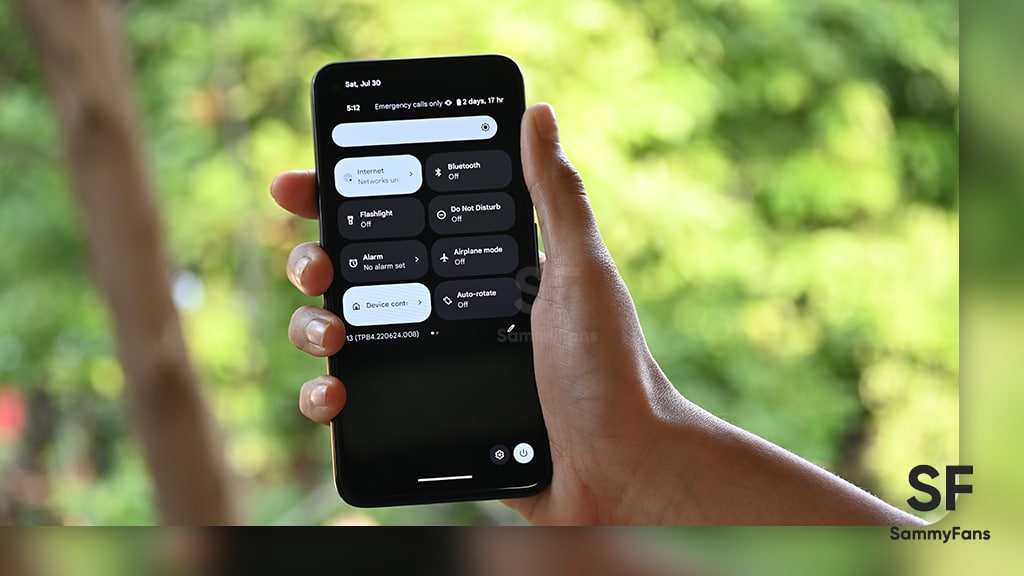Android
Android 15 upgrades with battery-saver adaptive refresh rate feature

Android 15 introduces an adaptive refresh rate (ARR) feature, which allows your phone’s screen to automatically adjust its refresh rate based on the content you’re viewing. This means the screen can lower its refresh rate when you don’t need high refresh rates, saving battery and reducing lag.
Previously, Android could only switch between fixed refresh rates like 60Hz, 90Hz, or 120Hz. This switch worked for most situations but it wasn’t as efficient as ARR, which can make the display work at the most appropriate rate without needing to switch between different modes.
Android 15 now lets the display change the refresh rate within a single adaptive mode to make it smoother and more efficient. The ARR feature reduces power consumption and eliminates jank caused by mode switching.

This feature is especially useful for phones with high refresh-rate screens, like those with LTPO displays. These displays could save battery by lowering the refresh rate but Android still relied on switching between fixed modes.
However, not every phone will get this feature. To support ARR, devices must have the latest version of Android’s display software (HWC HAL version 3), which some older phones don’t have. Smartphones like the Google Pixel 7 and those with the Snapdragon 8 Elite chip already support this feature, but older models likely won’t.
When it works, ARR could help fix issues like phones sticking to 60Hz even when watching films at 30Hz or 24Hz. Despite smoother video and less power consumption, it won’t give Android the same level of variable refresh rate support that PC-like VRR experience.
Samsung Galaxy S25 to stick with Snapdragon 8 Elite despite Exynos 2500 benchmark
Android
Google’s Android 15 QPR2 Beta 1 update is now available

Google has released the first beta of Android 15 QPR2 for Pixel users. The update can be identified via build version BP11.241025.006. However, users are also waiting for the stable release of Android 15 QPR1 in December this year.
Android 15 QPR2 Beta 1 update comes with the November 2024 security patch. It is available for a wide range of Pixel devices, including Pixel 6, Pixel 6 Pro, Pixel 6a, Pixel 7, Pixel 7 Pro, Pixel 7a, Pixel Tablet, Pixel Fold, Pixel 8, Pixel 8 Pro, Pixel 8a, Pixel 9, Pixel 9 Pro, Pixel 9 Pro XL, and Pixel 9 Pro Fold, as well as the Android Emulator.
Quarterly Platform Releases are updates that bring more noticeable changes and new features compared to the usual monthly bug fixes. These updates are perfect for testing out bigger UI changes or new features that don’t need to wait for a full Android version release.
![]()
The QPR2 Beta 1 is the second major update for Android 15, with the final version expected to launch in March 2025 (via 9to5Google). This update brings the usual bug fixes, security enhancements, and new features to test.
Users participating in the beta program are advised to report any issues via the Android Beta Feedback app, easily accessible through the app drawer or Quick Settings. Install the update now to get an enhanced experience.
Android 16 to make Quick Settings access easier with one-finger swipe
Android
Android 16 to make Quick Settings access easier with one-finger swipe

Google is reportedly going to bring an interesting change with Android 16, which will no longer require two fingers to pull down the Quick Settings panel. Previously, there were concerns that users would need to swipe down with two fingers to bring up the Quick Settings. Fortunately, Google has decided to simplify this process.
With Android 16, accessing the Quick Settings will only require a single-finger swipe down on the right half of the status bar. The one-finger swipe access aligns it more closely similar to other Android manufacturers, like OnePlus and Samsung, have designed their systems.
Several users didn’t like the idea of needing two fingers to swipe down, as it felt more awkward and less convenient. By switching to a single-finger swipe for Android 16, Google will make it easier for users to manage their settings with less effort. A well-known tipster Mishaal Rahman (via Android Authority) spotted the code for this Quick Settings change.

However, the new design still lacks the ability to swipe seamlessly between the notifications and Quick Settings panels. Hopefully, Google will add this feature before the official release.
In addition to the swipe change, Android 16 will introduce resizable Quick Settings tiles and better categorization to help users find specific settings more easily.
However, these features are still being worked on and may not be fully ready in the current beta. They are expected to roll out in the final Android 16 release, which is expected in mid-2025.
Android
Android 16 may introduce system-wide audio input switcher

Android 15 has already been launched, and now leaks and rumors about the upcoming version are starting to surface. A new report suggests that Android 16 could soon allow users to switch audio input for all apps from a single, system-wide menu.
Currently, if you want to use an external microphone instead of your phone’s built-in mic, you have to do it within each individual app, if the app even supports this option. However, Android 16 may solve this problem by adding a system-wide audio input switcher to the existing media switcher dialog, which was first introduced in Android 11.
This feature will be beneficial for users who want to record high-quality audio from an external microphone. Some apps like Camera and Recorder already allow users to choose audio input via the Media Recorder API.
However, several apps set the phone’s built-in microphone as default without providing the option to switch. This can be an issue for anyone trying to make professional recordings using an external mic.
Android users can currently change audio output devices, such as Bluetooth speakers or wired headphones, through the media switcher. However, there has been no similar option to manage audio input devices.
- Android 15
- Android 16
The new system-wide audio input switcher could provide a simpler way to select which microphone to use across all apps with Android 16.
Thanks to MishaalRahman (via AndroidAuthority) for spotting the code for this new feature in Android 15 QPR1 Beta 3. There is hope that the system’s wider audio input switcher feature will also be available on smartphones when Android 16 is released in mid-2025
Android 16 ‘Baklava’ might drop sooner than expected – June 2025 release?
















